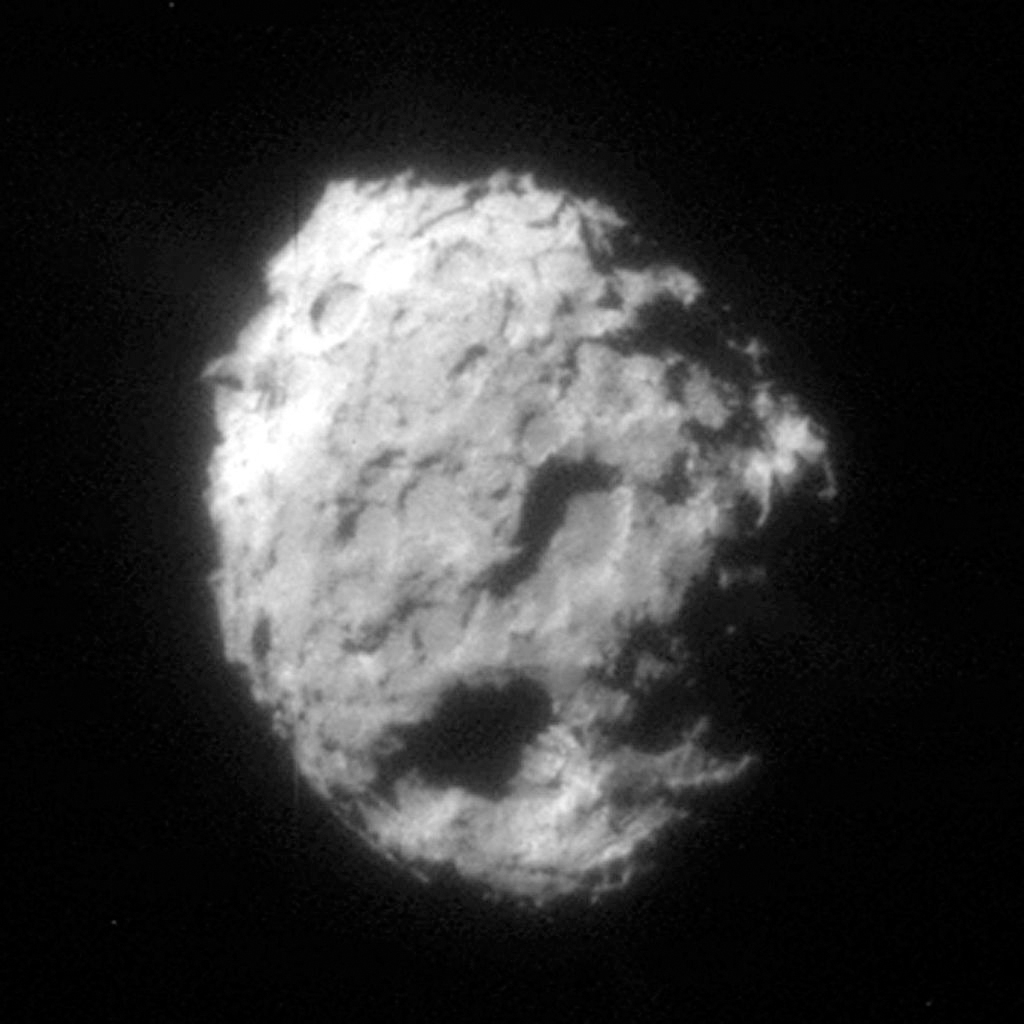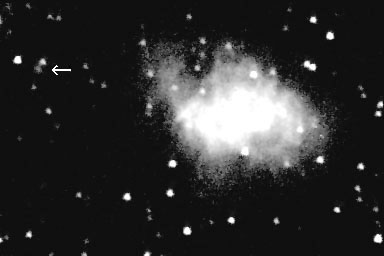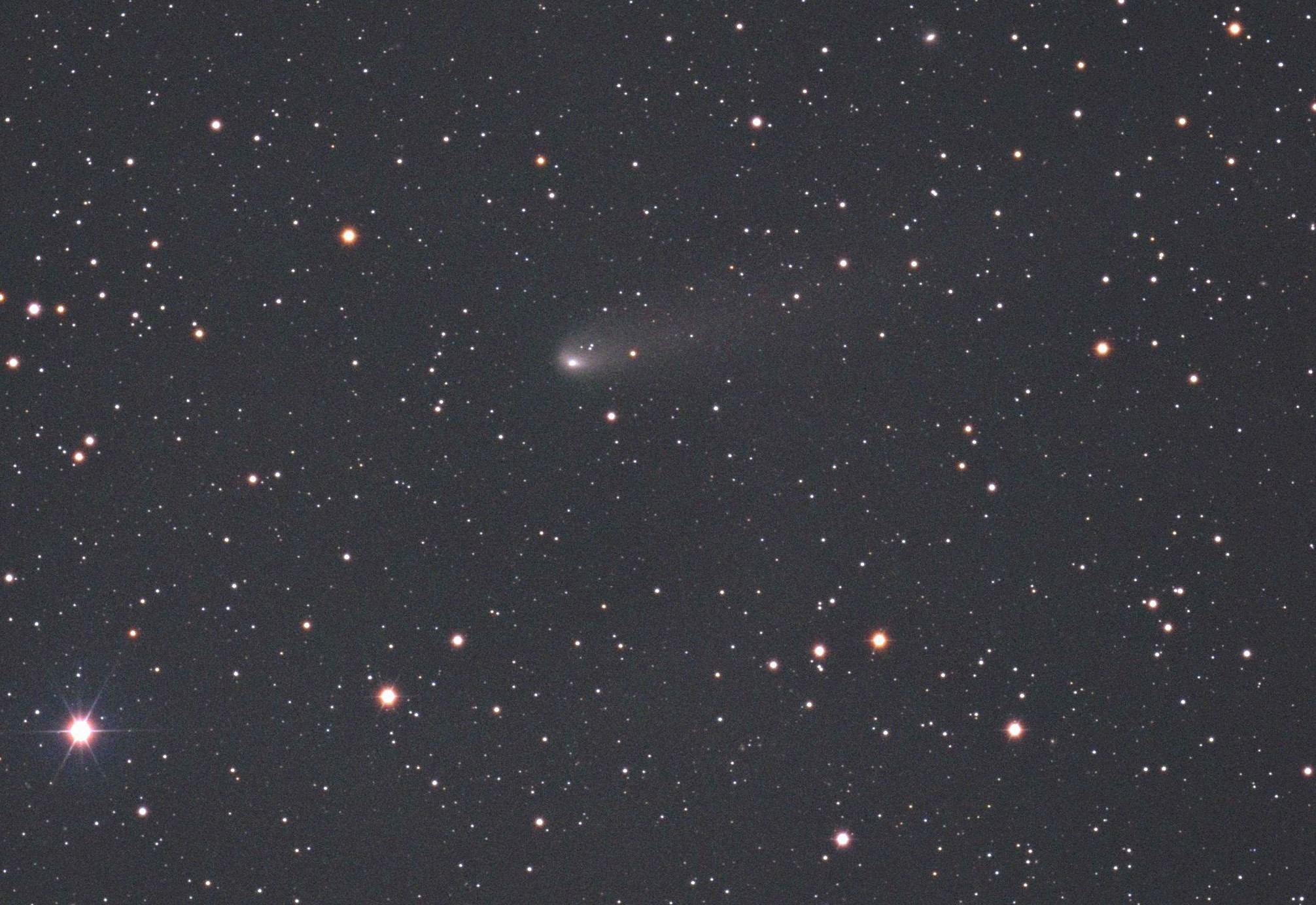
Comet 81P/Wild 2’s Perihelion: 2003 September 25.93, q = 1.590 AU
Comet 81P/Wild 2 was discovered on January 6, 1978, by Swiss astronomer Paul Wild, who photographically patrolled the skies for several decades from the University of Bern. Throughout that time he discovered numerous asteroids and supernovae, as well as eight comets; he has the interesting distinction of having discovered at least one comet during each of the decades of the 1950s, 1960s, 1970s, 1980s, and 1990s.
This particular comet was found to be traveling in a short-period orbit with a perihelion distance of 1.49 AU and an orbital period of 6.17 years. Most interestingly, calculations soon showed that it had passed less than 0.01 AU from Jupiter in September 1974, and prior to that had been in a much larger orbit with a perihelion distance of 4.95 AU and an approximate orbital period of 44 years. Meanwhile, an approach to Jupiter (1.01 AU) in June 1986 has changed the 1978 orbit slightly, to a present perihelion distance of 1.6 AU and an orbital period of 6.4 years.
In 1978 the comet remained visually detectable for several months and reached a peak brightness near 11th magnitude. It has continued to be visually detectable at every return since then, although the viewing geometry is sometimes unfavorable; indeed, its 2003-04 return was very unfavorable, with the comet’s being in conjunction with the sun around the time of perihelion passage. Meanwhile, during the best return it has had thus far, in 2010, it reached a peak brightness of magnitude 9 ½ and I could faintly detect it with ordinary binoculars.

In part because of a small orbital inclination (3 degrees) which makes it an energy-efficient destination for spaceflight, as well as its pre-discovery encounter with Jupiter which suggests it may be a “pristine” object newly arrived within the inner solar system which in turn makes it an interesting scientific target, 81P was often considered an early destination for a spacecraft mission. In 1995 it was selected as the destination comet of NASA’s Stardust mission, which was launched from Cape Canaveral, Florida on February 7, 1999. After its launch Stardust completed two full orbits within the inner solar system, which included a flyby of the small main-belt asteroid (5535) Annefrank on November 2, 2002, and on its third orbit it passed 237 km from the nucleus of Comet 81P on January 2, 2004.
Via means of a very lightweight, porous substance known as “aerogel” which had been invented by Jet Propulsion Laboratory scientist Peter Tsou, Stardust collected over one million samples of dust particles during its passage through Comet 81P’s coma. When Stardust passed by Earth on January 15, 2006 it deployed a capsule containing these samples into the atmosphere, where it plummeted to the surface and was then successfully retrieved from the U.S. Army’s Utah Test and Training Range southwest of Salt Lake City.

Analysis of the samples retrieved from Stardust has revealed that the comet formed in the region of the Kuiper Belt beyond Neptune and that there was an unexpected amount of mixing between materials in the inner and outer solar system. Various organic compounds, as well as the silicates olivine and pyroxene, have been identified within the samples, and in 2009 a team led by Jamie Elsila of the Goddard Space Flight Center in Maryland announced the presence of the amino acid glycine, which is utilized by life here on Earth.
Comet 81P/Wild 2 most recently passed perihelion in July 2016, reaching 11th magnitude in the process, and it should reach a similar brightness around the time of its next perihelion passage in December 2022. It remains in the same basic orbit that it is in now until an approach of 0.11 AU from Jupiter in August 2058 increases its perihelion distance to 1.75 AU and its orbital period to 6.6 years.
More from Week 1:
This Week in History Special Topic Free PDF Download Glossary
Ice and Stone 2020 Home Page


